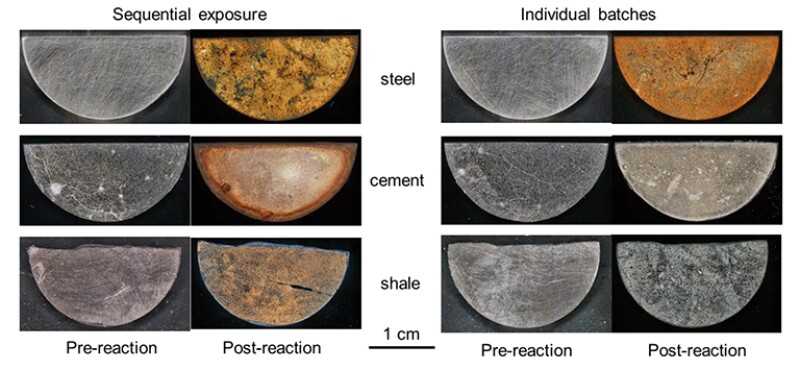Numerous studies have been conducted on rock/fluid interactions of deep shale reservoirs exposed to hydraulic fracturing fluid (HFF). However, the effect of fluid/steel/cement components on the chemistry of the near-wellbore shale region has been overlooked. In the study described in the complete paper, steel, cement, and shale samples were exposed to HFF sequentially in the same batch for 3 days at 66°C. Unlike the reaction of fresh HFF to direct exposure to shale, the fluid chemistry and exposed surfaces of steel and cement were altered significantly after exposure.
Methods
Experimental materials, including multiple steel, cement, and shale half-circle coupons made of core samples and the featured hydraulic fracturing fluid, are detailed in the complete paper.
Sequential Exposure Experiment. For the sequential exposure batch, three steel coupons were placed at the bottom of a borosilicate bottle with 300 mL of HFF. After 3 days of exposure, all three steel coupons were removed. 100 mL of the reacted fluid was collected and filtered for fluid-chemistry analysis. Then, two cement coupons were placed in the bottle to react with the remaining 200 mL of fluid at the same temperature.


